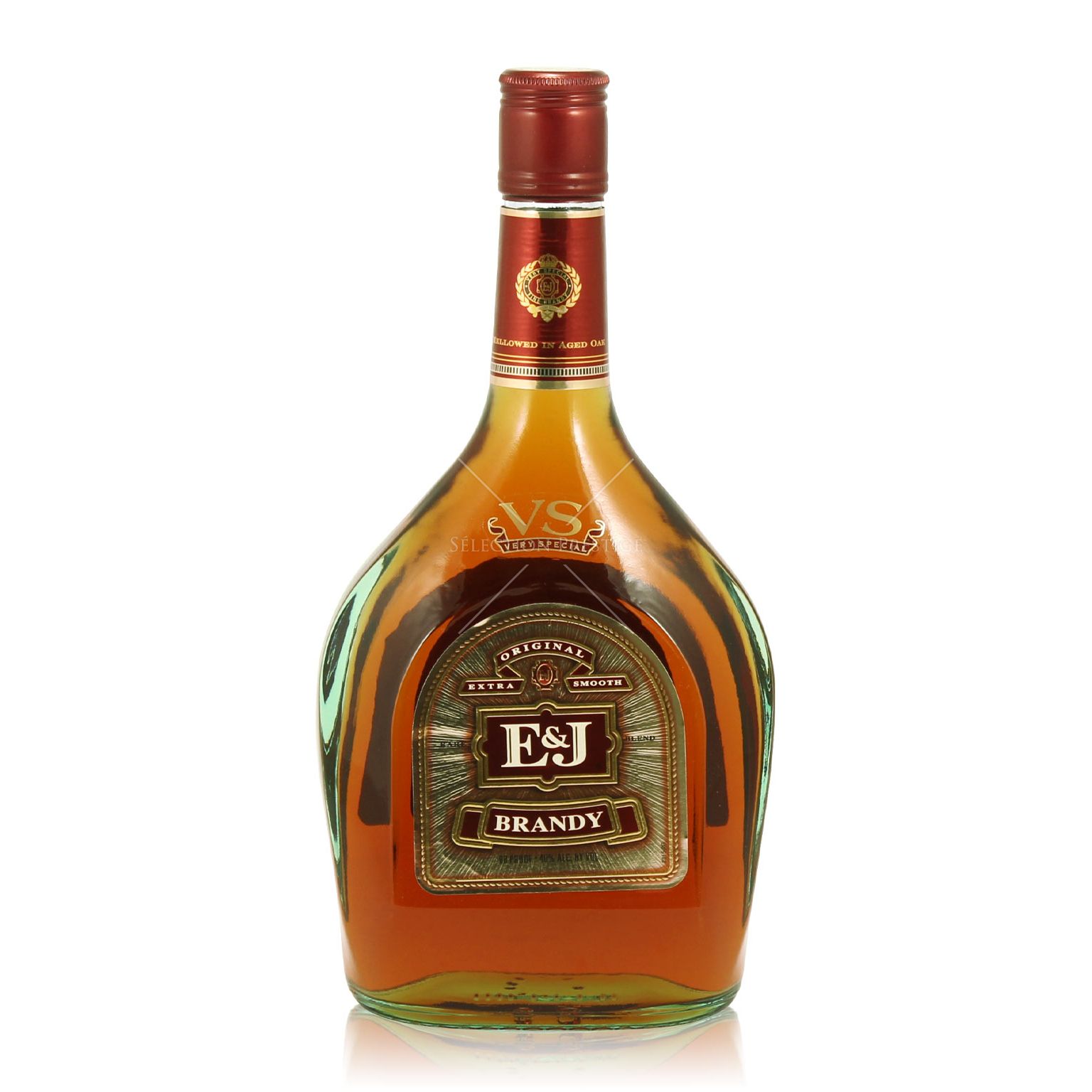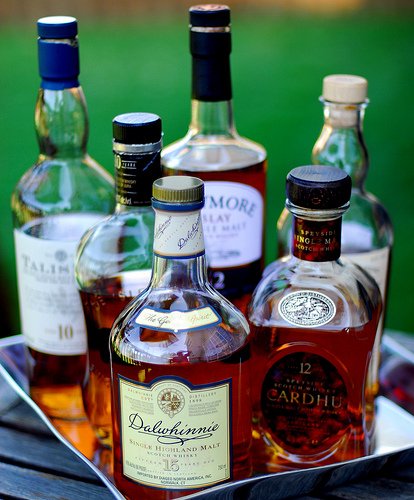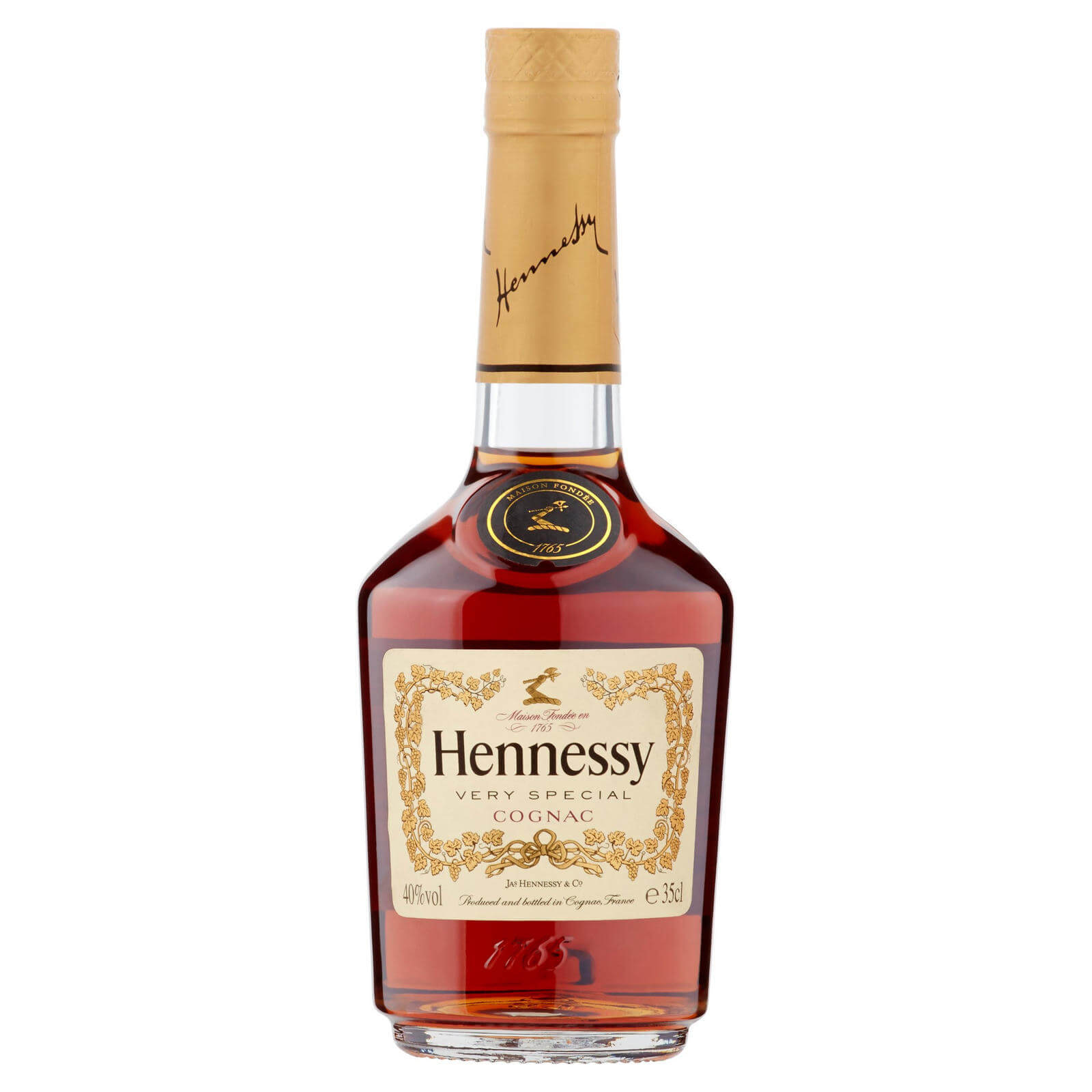Best Spanish: Lepanto Brandy Solera Gran Reserva
Wine chateau
Region: Jerez, Spain | ABV: 40% | Tasting Notes: Dried fruit, Toasted nuts, Dark cocoa
To be called a Brandy de Jerez, a spirit must be made in the Jerez area of Andalusias famed Sherry Triangle,” aged in American oak that previously held sherry, and matured via a solera system. This bottle is made using wine from estate-grown palomino fino grapes distilled in centuries-old copper alembic pots, then aged for a minimum of 12 years.
Dan Nicolaescu, beverage manager at New York’s Copper and Oak, describes it as concentrated and alluring with a rich mahogany color with golden sparkles, intoxicating flavors of nuts, dried fruit and cocoa, and a long, fulfilling finish. He says the Lepanto brandy works well in stirred drinks like an Old Fashioned, where it plays beautifully with the Angostura bitters.
Region: California, USA | ABV: 40% | Tasting Notes: Meyer lemon, Grapefruit, Baking spices, Luscious finish
California is an emergent region for the spirit nowadays, but Germain Robin has been making luscious brandy there for nearly 40 years, since the day when one of the founders picked the other one up hitchhiking.
Final Thoughts On Brandy And Whiskey
When it comes to considering brandy versus whiskey, both spirits have a lot to offer in different ways. They both are sippable and mixable, and they both have interesting histories and evolutions, which is always fun to learn about!
My best advice for finding a good brandy is to trust the price tag. If its really inexpensive, it might be a poorly crafted product. In the case of both whiskey and brandy, starting around the thirty-dollar and up price range will get you something solid that you can sip on and mix with confidently.
What I really want you to walk away with from this article is that both brandy and whiskey have their place on your home bar and in your heart. If youve dismissed either because of preconceived notions, I encourage you to try a few before you make up your mind.
Cheers to brandy and cheers to whiskey! Happy tasting!
Recommended Reads:
Brandy Vs Whiskey Compared: What They Are Where They Came From And How To Enjoy Them
- Post category:Whiskey Varieties
While whiskey has deep roots that are intricately tied in with American history, brandy is a little more obscure. People tend to think of it as a fancy sipping drink, something their parents had after dinner instead of dessert.
But the fact is that while the two spirits are unique, they both have interesting backgrounds and evolutions, and they both have their place on bars, whether its in your home or at your local watering hole.
So lets take a look at what exactly whiskey and brandy are, how they are similar and different, and why they belong on our shelves and in our hearts.
Recommended Reading: What Is The Best Spiced Rum
Brief History Of Bourbon
It is believed that the process of distillation was brought to Kentucky by the Scots and Scots-Irish settlers sometime in the 18th century. They began to farm the area earnestly alongside English, German, French, and Welsh settlers.
Now the origin of bourbon is not adequately documented, and this is probably because of the conflicting claims and legends that are rife in the community.
Nevertheless, one thing is sure Bourbon has come to stay, and it is not going anywhere any time soon.
When To Drink Them

Wine is best to drink while eating, while brandy is best to enjoy after meals, just like whiskey. Due to its alcohol content, brandy is not advisable to drink before or during the meal because you can be drunk easily.
On the contrary, wine, specifically red wine, is best to enjoy while having dinner and eating meats to help digestion.
Don’t Miss: Don Beto’s Tacos And Tequila
Tastes And Uses For Brandy
While strong and fiery, brandy’s usually described as having a sweet taste it does, after all, come from fruit. But when it comes to a spirit with as many varieties as brandy, it can be hard to string together an exact flavor or description. Food and Wine, for example, describes an old bottle of Martell VSOP Cognac as filled with notes of “dried figs, vanilla, and leather.”
Grappa, on the other hand, is notably sharper and even abrasive in its flavor and sensation, though high-quality varieties can provide a smoother experience and even floral, herbal notes. And since it comes from fruit, what better way to pair brandy than with more fruity flavors? Take the classic, century-old Sidecar cocktail, in which cognac is shaken with orange liqueur and lemon. Or the Pisco sour, which uses fresh lime juice, simple syrup, and an egg white for its distinctive layer of cappuccino-like foam.
Brandy has more uses than cocktails, too. Kirsch, a cherry-based brandy, is beloved for its role in Black Forest cake. It’s also one of the many brandies used to ignite cherries jubilee and other showy, flambé desserts. So the next time you’d like to impress your friends with bananas Foster, snag a bottle of kirsch or cognac .
Best Armagnac: Darroze 40 Year Les Grand Assemblages
Region: Gascony, France | ABV: 43% | Tasting Notes: Nutty, Fruit forward, Bright citrus, Endless finish
Distilled once in a simple column still and less diluted, Gasconys artisanal brandy is richer, more rustic, more texturaland less industrialthan its better-known competitor, cognac. It also often aged much longer, and as Desoblin points out, you can get something really old made in small quantities by real people who are also the farmers, for the fraction of the price of a cognac.
This 40-year-old Armagnac offers very long and intense flavors: nutty, fruity, and citrusy with a rich, seemingly everlasting finish. At less than $200 a bottle, its an amazing gift to yourself, says Desoblin, so go ahead and splurge.
You May Like: Is Gin Good For Weight Loss
What Is Brandy Made From
Brandy is derived from the Dutch word brandewijn, which means burned wine.
Traditionally, brandy is made from grapes however, it can also be made from other fruits.
The two categories of Brandy, based on the other fruits constituents, are:
- Pome Brandy: Pome brandy is made with fruits like pears and apples.
- Stone fruit Brandy: Stone fruit brandy is made with cherries, plums, peaches, and apricots.
All categories of Brandy are made from fermenting natural fruit sugars to alcohol.
The alcohol is distilled, after which they are soaked in aged Oak barrels where they pick up their mellow, luxurious oak undertones.
Brandy And Whiskey Faqs
Question: Are Brandies and Whiskies in the Same Family?
Answer: No, whiskies are derived from fermented and malted grains, while brandies come from distilled wine and fermented fruit. This puts them in different spirit families.
Question: Is All Brandy Brown?
Answer: No, brandy can be aged if the distiller wants it to be enjoyed aged. The barrel is what gives brandy that brown or amber color so if the brandy isnt aged, it will be clear.
Question: Is all Whiskey Brown?
Answer: Not necessarily, there is such a thing as white whiskey, which is an unaged whiskey comparable to moonshine.
Question: Is Brandy More Expensive Than Whiskey?
Answer: This varies. You can get really cheap brandy that can often be sugar bombs that induce immediate hangovers. You can also get cheap whiskey that will do similar things to your body. Both can run pretty high, depending on the distillery, year, and region.
Recommended Reading: What Mixes Well With Tito’s Vodka
What Are The Production Differences Between Whiskey Vs Cognac
Both cognac and whiskey are fermented with yeast, distilled, and aged in oak barrels. Thats where the buck stops with the production similarities.
Apart from the obvious difference between the main starting ingredients, the way each of the spirits is processed is completely distinctive.
Cognac follows strict guidelines whereas whiskey has a much freer process which allows it to produce variations of whiskey such as wheat, Irish, or bourbon varieties.
From Grain to Glass: How is Whiskey made?
Whiskey starts as a grain. Mainly Barley, but it could have added rye in it for rye whiskey or corn in it for bourbon.
The magic then begins with the malting process where husks and debris are removed. Nobody needs floaters in their whiskey!
Then comes the mashing process where water is added to dissolve the sugars. Yeast is then put in to start the fermentation process and it is then double, or sometimes triple distilled.
The whiskey is finally placed in oak casks for the aging process. This aging allows harsher flavors to mellow and for the whiskey to draw flavor and color from the Oakwood.
Whats more, different types of oakwoods give the whiskey completely different flavors.
American white oak offers caramel and vanilla-like notes and European oak gives us a whiskey that is more bitter and spicier.
Although the process for producing whiskey is the same, the subtle differences from grain type, aging length, to the oak they use can make a difference in taste, color, and aroma.
Cognac Vs Whiskey Complete Comparison
Last Updated on July 26, 2022 by Lydia Martin
With plenty of alcoholic drinks available today, choosing the perfect spirit could be particularly challenging. Take Whiskey and Cognac, for instance.
When it comes to Cognac vs Whiskey, youll find that they differ in criteria like age terms, distillation process, and base product. The team gathered resources for all things Cognac and Whiskey and pointed out the main difference. Lets dive in.
You May Like: Remy Martin Fine Champagne Cognac Vsop 1724 Price
Aged For Different Lengths
Both Cognac and Whiskey will be aged in wooden barrels or casks. However, whiskey tends to spend a lot more time aging. Its common for whiskey to be aged anywhere between 3 to 50 years. Cognac is usually aged between 2 to 6 years.
Another point of difference is that cognac uses special terminology to specify how long it has been aged. Cognac is labeled as:
Best For Sangria: Cognac Park Vsop

Region: Cognac, France | ABV: 40% | Tasting Notes: Ripe citrus, Salted caramel, Stone fruit
VSOP, or very superior old pale, refers to cognac in which the youngest brandy in the blend is at least four years old. This one from fourth-generation master blenders Lilian and Jérôme Tessendier has the orangey flavor that meshes with citrus and other fruit in a classic Spanish punch. Its not too creamy or cumbersome. Instead, its lithe and zingy, which is just the flavor profile you want when you’re making a pitcher of Sangria. Plus, the cognac is flavorful enough that a little goes a long way.
You May Like: What Food Goes With Rum
Which Is More Healthy: Whisky Or Brandy
Whisky and brandy each offer health benefits when consumed in moderation. Each spirit is similar in terms of nutritional content, offering low calories, low sugar content, and low sodium. Each contains trace vitamins and minerals, including phosphorus, thiamine, iron, and zinc.
| Whisky Nutrition Facts per Shot |
| Calories |
| Vitamins/Minerals | Phosphorus, Thiamine, Potassium, Riboflavin, Zinc, Iron, Niacin |
Long ago, healthcare workers used both whisky and brandy as medicinal spirits. Doctors used brandy in the late 19th and early 20th centuries as a cardiac stimulant to improve blood pressure. In other cases, it was used as a depressant and prescribed as a sedative.
As early as the 16th century, records show that doctors often prescribed whisky for anti-aging effects, to relieve congestion, and help with pain. In the early 20th century, doctors often handed out whisky prescriptions for a multitude of ailments, including tuberculosis.
Seek Out These Smaller Craft Producers
The biggest Cognac brands endorsed by musicians, actors, and athletes have inundated us with commercials over the last decade. Hennessy, Remy Martin, Courvoisier, and Martell account for over 80 percent of sales in the United States . But beyond these Big Four are smaller houses that are only known in the U.S. amongst connoisseurs and bartenders and to many of these educated few, their stuff is even better than the big guys’! Here are five to get to know:
Don’t Miss: What Mixes Good With Honey Whiskey
Cognac Vs Whiskey: 4 Differences To Help You Choose The Best
When it comes to choosing a spirit to drink, the choices are plenty. Choosing the best one can be a daunting task thanks to the many options available. Today, the comparison between French Cognac vs whiskey dominates a majority of late-night conversations. The fight between the two drinks is older than the drinks themselves.
Lets recap the 4 differences between Cognac vs Whiskey:
Are you confused between Cognac vs whiskey? Are you wondering how they are different and/or similar? If yes, then read further to find out everything you need to know to appreciate their differences.
Armagnac Vs Cognac : Age Counts
Cognac is a blend of brandy of different ages. Its label indicates the aging period of the youngest brandy used in the blend.
Cognacs are classified by age of aging according to standardized terms controlled by the BNIC :
- VS : at least 2 years of aging in wood
- Superior : at least 3 years of aging in wood
- VSOP : at least 4 years of aging in wood
- Vieille Réserve : at least 5 years of aging in wood
- Napoleon : at least 6 years of aging in wood
- XO : at least 10 years of aging in wood
Behind these acronyms, however, are the specific aging characteristics of each producer.
Armagnacs, which can be blended or vintage, are not subject to the age count standards like Cognac. And for good reason!
- Like Cognac, Armagnac can be made from a blend of brandy of different ages. Its label then indicates an age count which attests to the duration of aging of the youngest brandy in the composition of the blend. This similarity with Cognac explains why some Armagnac houses choose to borrow the names of Cognac for their blends, a practice tolerated by the BNIA .
The selection of these Unique Pieces is rigorous and demanding and follows a meticulous tasting process that lasts 10 years.
You May Like: Jose Cuervo Ready-to-drink Margarita
What Other Types Of Brandy Are There
You’ve probably heard of grappa, another grape-based brandy made from leftover wine that’s generally associated with Italy, and pisco, a clear brandy that hails from Peru. But there’s also calvados, an apple brandy from France, and armagnac, another grape brandy from France. Long live the French and their dedication to the art of fermented fruit juices!
Hungry For More?
Armagnac Vs Cognac : Two French Brandies Two Histories
Armagnac is the oldest French brandy! Its production is attested to since 1310 when its therapeutic virtues were praised by the prior of the town of Eauze. Within a century, this apothecarys remedy became a marvelous drink appreciated for its gustatory qualities, a precious brandy produced alongside the regions wine production.
Cognac has a very different historical trajectory, which influences its current reputation. While Armagnac was developed on a French consumption model, Cognac was established on an export model to the Netherlands and England. In the 16th century, while the English controlled the Bordeaux region, Charente wine was exported by the Dutch to Northern Europe from the ports on the Atlantic coast . It was distilled to be preserved and travel without arriving sour at its destination. This brandy was then diluted with water to be consumed like wine. But Cognac as such only really emerged in the 18th century, with the appearance of double distillation borrowed from Whisky and aging in oak barrels. It was conceived for an export market at a time when English economic and demographic growth was causing a shortage of alcohol. Merchants from across the Atlantic set up trading companies in Cognac, specializing in the production of Charentais brandy. Under Napoleon III, a trade treaty signed between France and England boosted the export of Cognac. Today, 98% of its production is exported.
Read Also: What Company Makes Patron Tequila
Here’s The Real Difference Between Brandy And Cognac
For me, cognac and brandy are just the sippers I saw my grandparents enjoying after a hearty family meal, and the differences between them seemed minuscule or perhaps unimportant. But actually, the two brown spirits have some complicated similarities and differences. They are kinda the same, but also not? I know, it’s confusing, so let’s just jump into it.
Armagnac Vs Cognac : #armagnacisnotbrandy

Armagnac seems to be part of the brandy culture. I think it is part of the wine culture. Patrick de Montal
Armagnac is the spirit closest to wine. It is the only spirit that can truly magnify with age because it preserves the living organic matter of the fresh wine from which it is made. This particularity gives Armagnac a real singularity, that of being able to evolve over time like a great wine.
This living brandy reflects the expression of a year. This is why Armagnac is the only brandy that can fully justify the vintage. Its aging contributes to give it a unique complexity. This is what links it to the culture of wine and distinguishes it from other brandies, burnt brandies , or dead brandies .
Recommended Reading: How Much Does Pinnacle Vodka Cost
Distilled In Pot Stills
Traditionally, brandy is distilled using large pot stills, which is the same kind of still used to produce the best Scotch whiskies. Some modern brandies still use this distillation technique, however, most use a more industrial process that can make use of continuous or semi-continuous stills. This makes it easier for brandy producers to produce a high-quality product reliably.